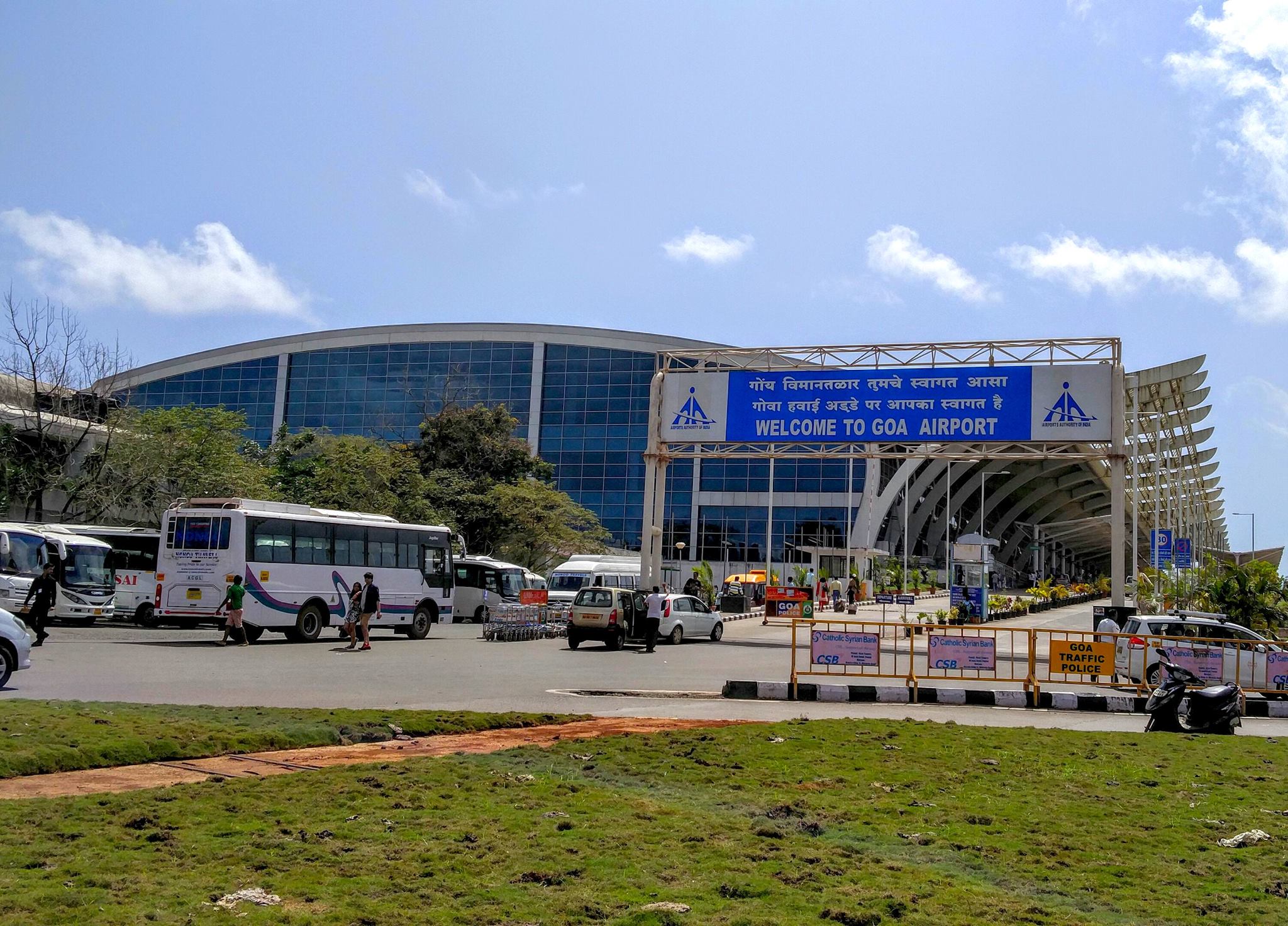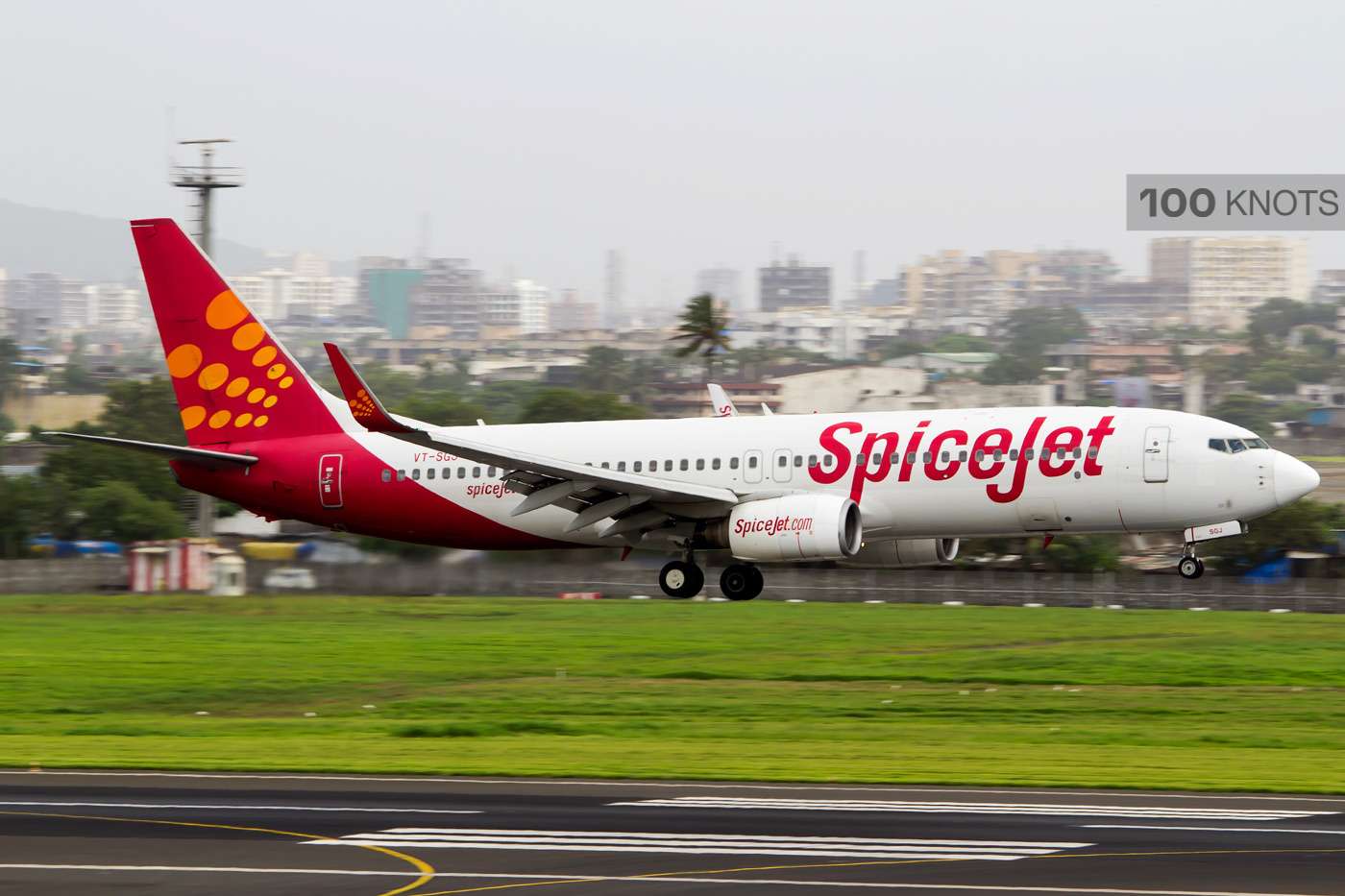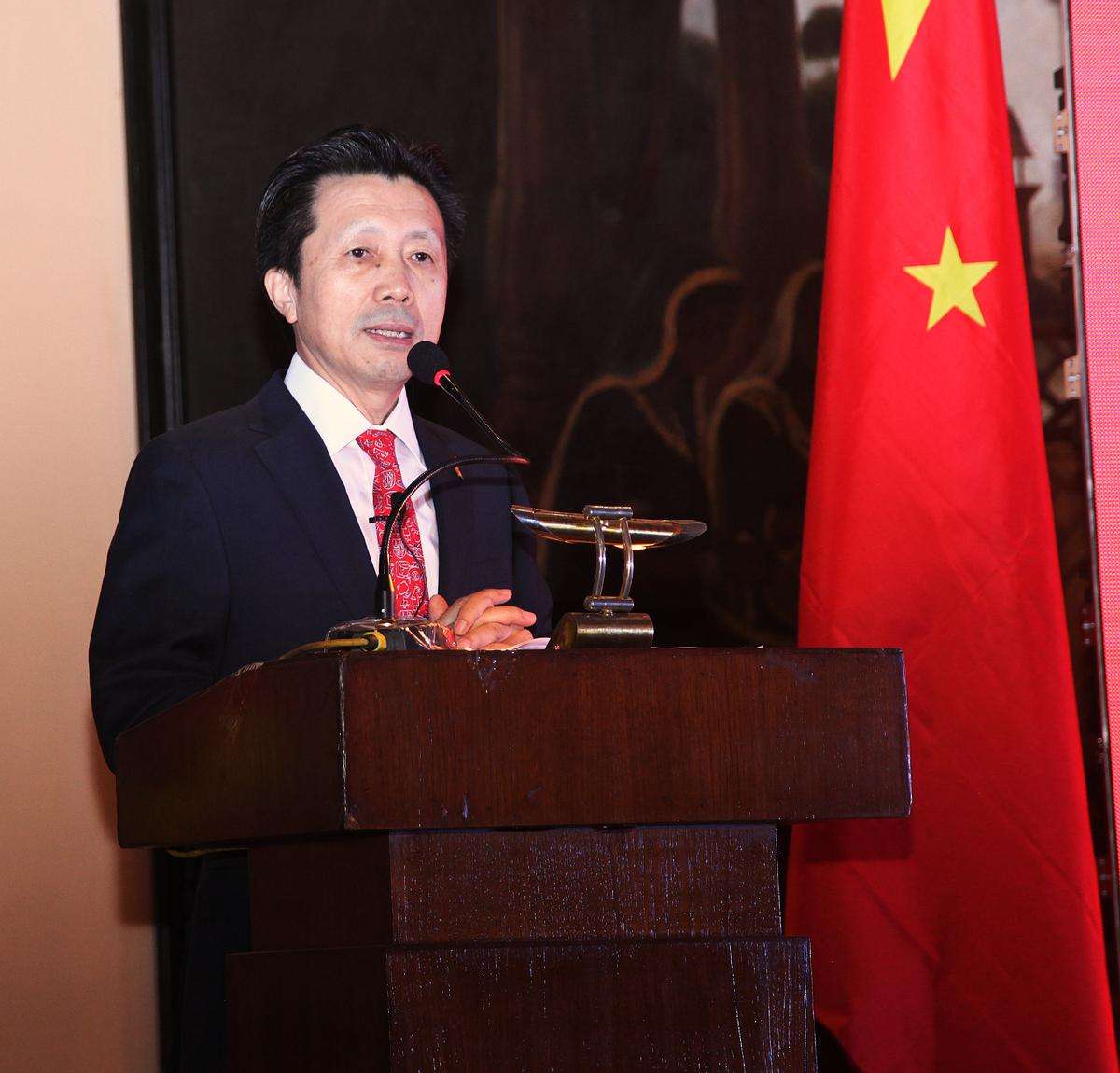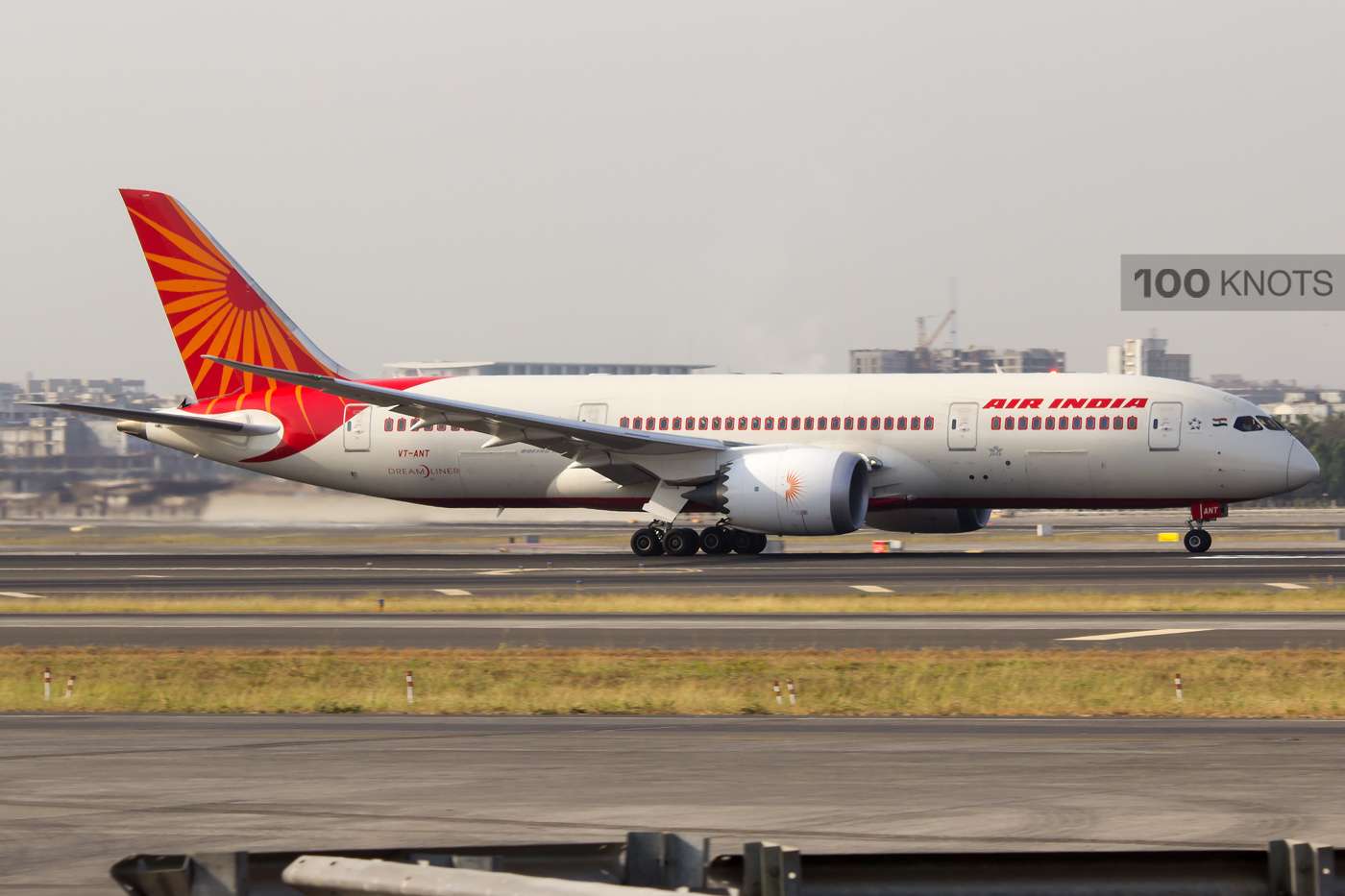Chief Minister of Goa announced on Friday, November 4 that the international airport in Mopa in Goa will be inaugurated after December 8 depending on the schedule of PM Modi.
Chief Minister Pramod Sawant stated on Friday that the air traffic control tower and passenger terminal building at the Mopa international airport is currently around 95% finished. He took stock of the airport's development in the evening and declared, “The remaining 5% of the ongoing work is mostly of landscaping and beautification.” So, the remaining work would be finished most probably in the next 15 days.
??Sawant stated that the lounges for arrival and departure as well as the facilities for baggage claim are essentially ready for air passengers. The construction of the airport is proceeding as planned and the public opening of the airport is almost complete. Prime Minister Narendra Modi's availability will determine when the ceremony will take place.
PM Modi will inaugrate Mopa airport after December 8
The Chief Minister responded to concerns about the delay in road construction by stating that road connectivity from the national highway to the airport would be finished by October 2023.
“The government has undertaken road widening for which the deadline is November 23. The airport will also get road connectivity to Kudal in Maharashtra.-Sawant said
In November 2016, the Goa government and GMR Airports Ltd (GAL), a division of GMR Infrastructure, inked a concession agreement for the development and management of Mopa's new international airport.
According to GMR Goa Chief Executive Officer R. Seeshan, who will be in charge of managing the facility, only domestic flights will be taking off following the airport's December opening. International flights will begin to operate in January 2023.
“Almost all domestic airlines are interested in operating from the Mopa airport with requests for 100 parking slots made so far by the airlines.” -Sheshan disclosed
He also said that five international airlines have so far requested parking spaces. Major retailers will occupy space in the passenger terminal to provide a full shopping experience.
With plans to raise capacity after 80% of the goal is accomplished, it will initially have a 4.5 million passenger capacity. In Phase 1, the airport's integrated cargo terminal will be able to handle 25,000 tonnes of cargo.
https://twitter.com/dip_goa/status/1588578392852828160
“The airport can handle 4.4 million footfalls annually. This will be increased depending on demand. We have also installed a 25,000-ton Temperature Control Facility at the airport to handle pharma, fruits, floriculture, horticulture items etc,” he added.
ALSO READ - Dabolim Airport will remain operational
On Wednesday, November 2, the Union Minister of State for Civil Aviation V K Singh announced that the current Dabolim airport of Goa and the planned Mopa airport will operate simultaneously.
Dabolim airport and Mopa airport in Goa will work simultaneously
These airports' traffic management would be carried out to prevent any losses for either of them. Only 70 planes currently land each day at the airport in Vasco City, a civic enclave in the southern part of Goa, which is located near Dabolim.
After the commissioning, of the Mopa airport, the number of flights landing in Goa will go up to 150, Chief Minister Sawant said in July this year.
ALSO READ - First test flight conducted at Goa’s new Mopa International Airport
The GMR company will run the airport in Mopa while the Indian Navy manages the airport in Dabolim. On October 26, the Mopa Airport received an aerodrome licence from the Directorate General of Civil Aviation (DGCA), opening the door for the launch of commercial aviation operations there.
Read next
Boeing plans to increase new aircraft production & deliveries, supporting higher cash in 2023
Sakshi Jain
04 Nov 2022
According to a statement released by Boeing on Wednesday, November 2, it plans to increase new aircraft production and deliveries, supporting its estimate for higher cash in 2023.
Boeing estimated that it will create between $3 billion and $5 billion in free cash flow in the coming year, which is higher than the $1.5 billion to $2 billion it anticipated to generate this year but less than the $6.53 billion experts surveyed by FactSet expected.
Deliveries are crucial for aircraft manufacturers because deliveries are when airlines or other customers pay the majority of the transaction. Boeing and Airbus stated last week that issues with the supply chain and a manpower shortage have hampered the production and deliveries of new aircraft. Airlines have complained that a lack of aeroplanes is making it difficult for them to add new flights.
ALSO READ - Airlines need new jets but facing an aircraft shortage
Boeing anticipates producing 10 787 per month
According to Chief Financial Officer Brian West, Boeing anticipated increased free cash flow as it anticipates ramping up deliveries of the 737 MAX and 787 aircraft.
West said that the American aerospace company plans to deliver 400–450 MAX aircraft next year, up from the 375 single-aisle aircraft it anticipates delivering this year. Similarly, it anticipates delivering 70–80 787 aircraft in 2023.
The pandemic and the grounding of the 737 Max, the company's best-selling aircraft, following tragic crashes, are problems that Boeing is attempting to overcome at the same time. To assist pay off its debt, it wants to strengthen its free cash flow.
ALSO READ - Boeing B737 MAX fleet suspension is one of the single most extensive aviation insurance claims in history
Boeing anticipates producing 50 737 MAX per month
It anticipates producing 50 MAX aircraft and 10 787 aircraft per month, which will allow it to deliver 800 commercial aeroplanes at the very least by 2025. Currently, 31 MAX aircraft are produced per month; however, the production pace for the 787 is intended to progressively rise to five per month.
Due to manufacturing delays, reductions in the expectation for aircraft delivery, and rising losses at its military division, investors have become dubious of Boeing's ambitions. Some analysts questioned the company's production and delivery plans citing supply-chain problems.
However, Chief Executive David Calhoun asserted that the company has considered all of the potential difficulties.
“We believe the plan that we have out here, the guidance that we've provided is doable. If we didn't, we wouldn't put it up.”- Chief Executive David Calhoun stated.
Despite Boeing's "poor" record for missing its goals, Colin Scarola, an analyst at CFRA, said the outlook announced on Wednesday is "pretty conservative" and "achievable."Operationally, I am feeling much better about Boeing than I did last week," Scarola said.
Customers of Boeing have found it more difficult to ramp up capacity to take advantage of the increasing travel demand due to regulatory and production delays. According to current regulations, the Federal Aviation Administration (FAA) has until the end of December to certify the company's MAX 7 and MAX 10 aircraft.
“The playbook for us is very straightforward - deliver aeroplanes, generate cash, pay down debt”-Chief Financial Officer Brian West said
The MAX 7 is anticipated to receive certification later this year or in early 2023, while the MAX 10 is anticipated to receive certification in late 2023 or early 2024.
Boeing shares added 2.8% Wednesday after it released its forecast for the coming years at an event for analysts and investors at its Seattle-area facilities — the first of its kind since 2016, a spokeswoman said.
Read next
Russia's largest charter airline has restarted flights to Sri Lanka, and President Vladimir Putin has ordered more flights between Moscow and "friendly states".
ALSO READ - Russia plans to resume international flights to 52 “friendly” countries
Russia is Sri Lanka's third-largest source market for tourists, trailing only the UK and India, with almost 51,300 arrivals so far this year. However, after an aircraft was briefly detained in June, Russia's flag carrier Aeroflot decided to stop running commercial flights to Sri Lanka due to a legal disagreement.
On June 2, Aeroflot flight Airbus AU 289, which was scheduled to fly from Colombo's Bandaranaike International Airport to Moscow with 191 passengers and 13 crew members, was grounded as a result of legal action brought by the aircraft's owner, Celestial Aviation of Ireland, against the airline regarding an ongoing arbitration regarding the lease of the aircraft in London.
Russia's flagship airline Aeroflot resumed in Sri Lanka starting September
On June 4, following the argument, Aeroflot halted service between Moscow and Colombo. The Russian Foreign Ministry summoned the Sri Lankan ambassador in Moscow to voice its concern at the flight's cancellation. After having stopped for more than four months, Russia's flagship airline Aeroflot started operating again last month, bringing in tourists to the Island Nation.
Sri Lanka has been experiencing its biggest economic crisis, since gaining independence from Britain in 1948. Due to the severe lack of foreign exchange reserves brought on by the economic crisis, Sri Lankans have been facing issues due to cash shortages.
As a result of a dramatic increase in Russian visitors in October, Sri Lanka's tourist arrivals increased by a whopping 41% to 42,026 from the lowest level of 29,802 in September, breaking the 550,000 milestones in the first 10 months. The increase in arrivals was partly caused by the restart of Aeroflot, the Russian flag airline.
On November 4, a first-ever Azur Air flight with 335 passengers onboard landed at Bandaranaike International Airport in Colombo.
The Moscow-Colombo service will resume with an Aeroflot flight arriving at Katunayake International Airport on Monday, October 31, subject to the Sri Lankan government's assurance that none of its aircraft will be grounded or detained.
Harin Fernando, the minister of tourism for Sri Lanka, was present when the Aeroflot plane landed on Monday, 31 October. Fernando expressed his appreciation for the return of Aeroflot service and stated that it will increase travel to the nation in the winter.
On Thursday, November 4, a first-ever Azur Air flight with 335 passengers onboard landed at Bandaranaike International Airport in Colombo. Russian Embassy in Colombo tweeted–
https://twitter.com/Aviation_Voice/status/1588051826271653888
The restart of Russian flights would give Sri Lanka's tourism a lot of hope for the busiest season of the year, as Russia is the country with the second-highest number of visitors after India.
ALSO READ - Cash-strapped government to privatise Sri Lanka’s national carrier soon
Sri Lanka, which is suffering from the worst financial crisis since gaining independence in 1948, is waiting for the tourism industry to recover. This hope was dashed by the Easter Sunday terrorist attack in 2019, the Covid-19 pandemic for two years, and the political crisis that began early this year with violent street fights as a result of shortages of the most basic supplies like food, fuel, and medicine.
Read next
SpiceJet has for the first time started scheduled flights to Europe, after operating several medium to long-haul charters during Covid. The budget carrier will fly its Boeing 737 MAX twice a week between Amritsar and Rome Fiumicino; and thrice-weekly between Amritsar and Milan Bergamo from November 9.
These flights will take a 40-minute technical halt in Georgia’s capital Tbilisi where the operating crew — both pilots and cabin crew — will change both on the way out of India and back home.
With the airline’s entry into the India-European air travel market, SpiceJet would now become 3rd Indian carrier to serve this market, after Air India and Vistara.
SpiceJet launches flights from Amritsar to Milan & Rome
While this is a big achievement for the airline, Amritsar will now also become the only Tier-2 city in India to have direct connectivity with over 4 destinations in Europe, including, London & Birmingham in the UK and Rome & Milan in Italy.
“We used to operate a lot of charters to North America and Europe during Covid. There is a significant demand to travel on some of those routes on which we used to operate charters. Hence we have started scheduled Italy flights (with a technical halt for fuelling and crew change) from Wednesday. This is the first time we will be operating regularly scheduled flights to Europe.”SpiceJet Official
The airline had on Wednesday tweeted: “Captured a wonderful moment when India and Italy were on the way to create a new journey. It was a great honour and a pleasure to meet the ambassador of Italy Vincenzo De Luca.”
https://twitter.com/flyspicejet/status/1587664319793156097
ALSO READ - ITA Airways to launch Rome-New Delhi direct flights in December
With direct services between Rome & Milan Bergamo and Amritsar, ITA Airways would have to face certain challenges in attracting point-to-point traffic, as Punjab’s Italy traffic leakage to Delhi would be minimized. This is also said to be one of the reasons for Air India, to re-route its non-stop Delhi-Rome route as Delhi-Amritsar-Rome in February 2021, due to minimized traffic leakage from Punjab to Delhi.
From IndiGo to even the Italian Low-Cost carrier Neos, both have served the Amritsar-Italy market with charter services, while the latter continues to operate these flights. On the other hand, the full-service Indian carrier, Air India even operated scheduled non-stop services between Amritsar and Rome, from February to October 2021.
SpiceJet expects to get an additional INR 1,000 crore loan under the government’s amended emergency credit line guarantee scheme (ECLGS) for airlines.
SpiceJet expects to get an additional INR 1,000 crore loan under the government’s amended emergency credit line guarantee scheme (ECLGS) for airlines. Go First and SpiceJet are learnt to have applied for loans from the modified ECLGS.
ALSO READ - SpiceJet and Go First to get funds under modified ECLGS
A SpiceJet official had last month said this loan will “rejuvenate (the airline); help clear all statutory dues; induct new Boeing 737 MAX aircraft and settle the survivability debate once and for all.”
(With Inputs from FLYAMRITSAR INITIATIVE)
Read next
The Covid outbreak led to the suspension of flights between India and China, which have not been reinstated yet. But, the talks are moving headway and the direct flights may take off soon.
Zha Liyou, the Chinese Consul General in Kolkata, stated that Indian students studying in China before the COVID-19 outbreak have begun returning to the nation and emphasised the importance of resuming direct flights as soon as possible. The government of these two countries would be working towards making it happen.
Since the coronavirus was discovered in Wuhan in late 2019 and spread throughout the world, flight services between the two neighbours have been hampered. Despite Beijing's subsequent lifting of the visa ban after almost three years, the flight interruption caused significant hardship for hundreds of Indian students, businessmen, and families of Indians employed in China.
The COVID visa restrictions in China left a lot of Indian students stranded
A total of 23,000 Indian students, the majority of whom were studying medicine, were left stranded back home as a result of China's COVID visa prohibitions. They made plans to return to their universities in China but ran into problems because there were no direct flights.
Currently, Indian travellers are paying outrageous amounts of money for expensive flights as they journey to China via Sri Lanka, Nepal, and Myanmar.
However, it has been reported that more than 100 Indian students have recently returned to China via routes through third countries, particularly via Hong Kong. According to informed sources, Indians are encouraged to fly through Hong Kong, which has daily connectivity from India, because it is unlikely that flights will resume. They can then fly to cities in China, where they must endure a seven-day quarantine.
The negotiations between India and China to resume the limited air services have been ongoing for a while, but no progress has been made
The negotiations between India and China to resume the limited air services have been ongoing for a while, but no progress has been made, according to the sources, because Beijing is adamant about the flight cancellation policy affecting COVID customers.
According to the sources, the airlines have a difficult time adhering to the regulation because they are not the ones who carry out the COVID-19 tests, which are necessary for all travellers going to China.
“Direct air connectivity between India and China should start and both governments should work towards this. Several Indian students are now keen to return to China.”Zha Liyou stated during a press conference on Wednesday, 2nd November
On Wednesday, November 2, Mr Zha told reporters in Kolkata that his office and the Chinese Embassy had already granted visas to a large number of students, and more who has expressed a desire to return to China. The consul general also noted the return of flights between numerous Chinese cities and towns near India, including Dhaka, Colombo, and Myanmar.
India-China direct flights may resume soon
Mr Zha added, “We have to resume flights soon”. He continued by saying that many of "his chamber friends" (representatives of chambers of commerce in Kolkata) and not just students want flights to resume.
Many businessmen used chartered planes during the COVID-19 outbreak to return, Mr Zha noted, and he added that even oxygen concentrators were transported to India using special flights. Similar agreements might be possible for the time being, according to the Consul General.
Zha Liyou has emphasised that there should be a quick return of direct flights between the two nations, and both governments are working to make that happen.
ALSO READ - India suspends tourist visas issued to Chinese nationals
Read next
Air India has beaten IndiGo for the third consecutive month as India's top "on-time" airline. Since the takeover by the Tata Group, Air India has identified on-time performance (OTP) as a primary improvement goal, according to a report in the Economic Times (ET). Being punctual was one of the branding strategies of IndiGo.
ALSO READ - Air India issues several guidelines to cabin crew to enhance on-time performance
According to the most recent information provided by the DGCA, Vistara was India's highest "on-time" carrier in September, earning an OTP rate of 91%. Following it were Air Asia India (89.8%) and Air India (87.1%). IndiGo came in fourth with 84.1% of its flights departing on time. These numbers were 83.1 and 84.5% for Air India and IndiGo in June, respectively.
Air India becomes India's top "on-time" airline
Prior to April, IndiGo was the most punctual airline for domestic flights in February and March, with 95.4% and 93.9% of flights, respectively, arriving at their destinations on time. However, since that time, AirAsia and Vistara airlines of the Tata group have significantly improved their punctuality.
After acquiring Air India at the end of January, the Tata Group allegedly selected on-time performance (OTP) as a top area for improvement. InToead its turnaround strategy, the Tatas recruited senior Singapore Airlines Group executive Campbell Wilson, who assumed the position in June.
“We have invested in IT systems to improve the capability of aircraft predictive maintenance. We want to ensure the right systems are in place to monitor the turnaround times of aircraft. There is no magic bullet. We have to ensure that all systems are working perfectly.”
Campbell Wilson, CEO & MD, Air India
A cross-functional team has apparently been formed by Air India to thoroughly evaluate the impending winter flight schedule.
In response to Air India's recent growth, IndiGo has also made a few management changes. To boost performance, it has requested the cabin crew to make some significant adjustments to flight planning.
One of the instructions is to close the cabin door within 60 seconds of the last passenger boarding the aircraft. Additionally, the airline has instructed the pilots to arrive at the airports at least 75 minutes prbeforehe time when their aircraft is due to depart. They must be seated in the aircraft, 35 minutes before takeoff.
IndiGo has also accelerated the recruiting of ground personnel who lost their jobs due to the COVID-19 outbreak.
IndiGo has also accelerated the recruiting of ground personnel who lost their jobs due to the COVID-19 outbreak. In addition to providing affordable prices and hassle-free service, IndiGo, which has a 57.7% market share, touts being on time as one of its three pillars.
The main cause of aircraft departure delays was stated by DGCA as being reactionary, due to the size of its vast fleet. Reactionary delay refers to a delayed departure as a result of a delayed aircraft arrival. In September, 68% of departures were late due to this. Most delays happened at the airport in Mumbai.
“The primary issue is that IndiGo being the largest airline, also has maximum connectivity with the constrained airports such as Delhi and Mumbai. There are 150-200 departures daily from these busy airports, so one single delay can cause a chain reaction. Airlines also suffer in their punctuality during the monsoon season due to diversions and late departures.”
A person aware of the matter
According to Mark D. Martin of Martin Consulting, Air India increased AISATS's airport handling team's efficiency. Landing AI flights are now proactive in obtaining a gate. Given its size, IndiGo isn't doing too poorly either.
OTP is ultimately not just the duty of an airline. Airport managers can assure greater crowd control and reduce check-in wait times by working with security staff. Efficiency on the terminal side might be improved, for instance, by increasing capacity and accelerating clearance at immigration counters. This will complement the efforts made by airlines to improve their on-time performance.
(With Inputs from The Economic Times)






Comment